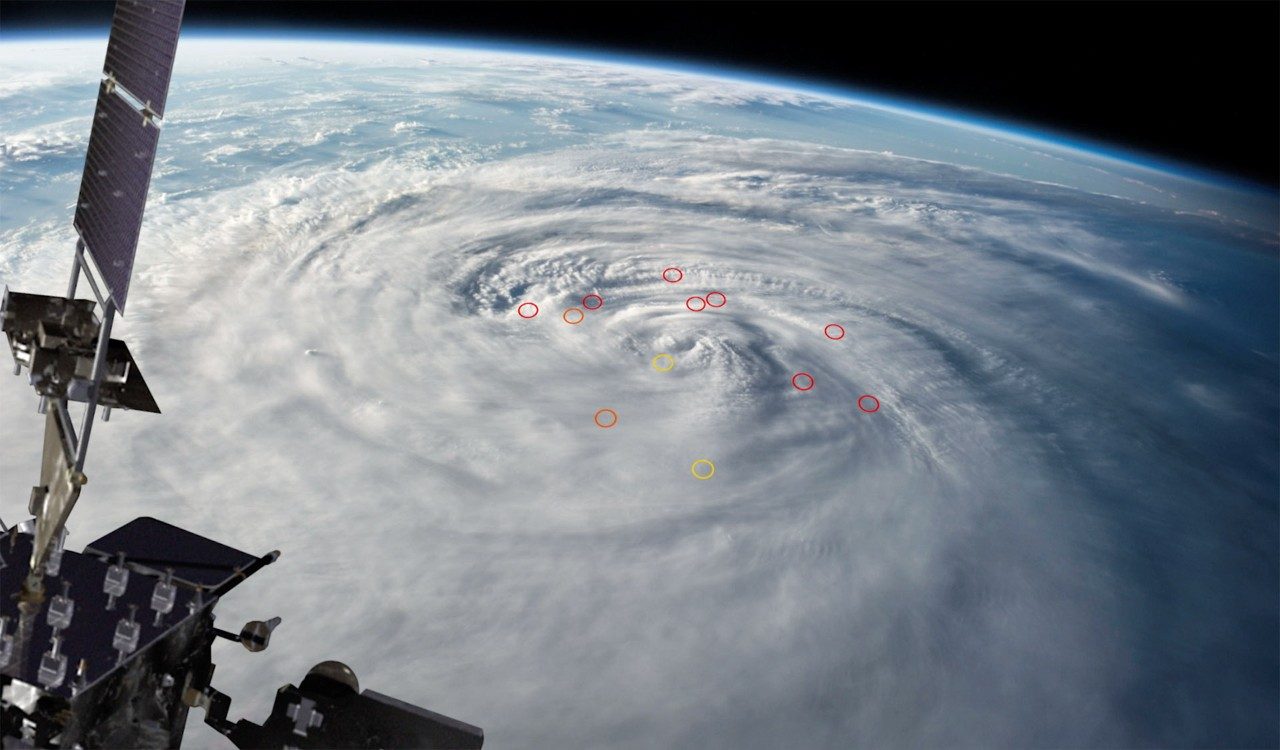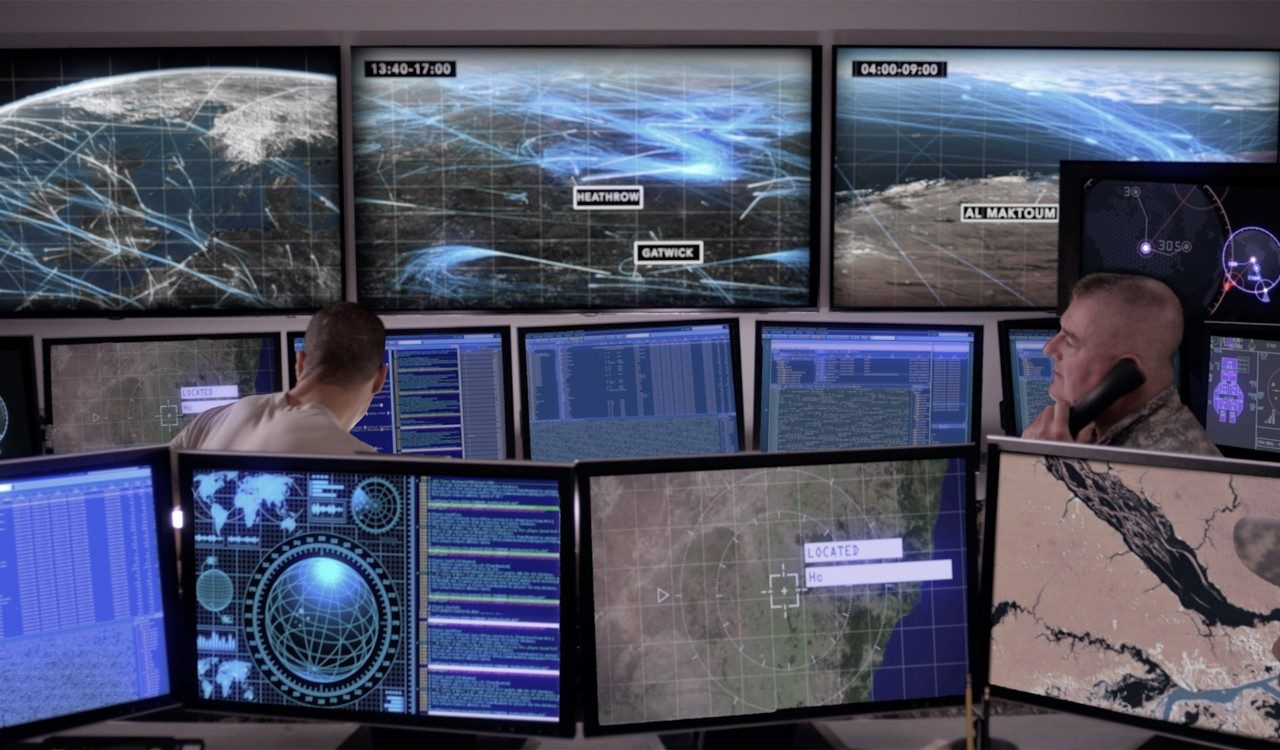
With cyber threats across the globe rapidly evolving, aerospace and defense industry experts continuously protect the systems and networks of U.S. armed forces and allies around the world. Those responsibilities bring unique challenges, most of which have never been encountered before.
While new challenges emerge every week, here’s a look at the most pressing cyber challenges, how Lockheed Martin is addressing them and how you can join us in our quest to develop solutions today to defeat the threats of tomorrow.

What makes differentiating friend from foe so difficult for the military when they’re conducting their missions?
The more the battlespace becomes interconnected with an increasing number of sensors, the more important it becomes to share data throughout different weapons systems to coordinate offensive and defensive operations. Friendly forces must dominate the air, land, sea, as well as the radio frequency spectrum and space. All the while, adversaries are relying on the spectrum and computer networks to plan and execute their operations.
A contested battlespace so far-reaching makes distinguishing friend from foe a daunting task. For example, differentiating which signals are true signals-of-interest that can inflict harm, and which emitters are benign? This is a significant problem as warfighters are overloaded with keeping track of threats.
What are some ways to fix that problem?
We’re making huge strides in assisting battlefield commanders by helping them make decisions, understand the electromagnetic environment, and perform command and control. One of the key technologies that's enabling this is artificial intelligence (AI). We're developing new machine learning (ML) algorithms and analytics that can help with situational awareness, threat behavior prediction, and accelerated decision making. We're also developing processes to create an accurate picture of the signal landscape presented to the commander using a variety of deep learning techniques.
Can the AI itself be hacked? If so, how can you protect against that?
Yes, at this stage it would be difficult to say that there is such thing as an impenetrable neural network, which comprises the algorithms designed to recognize patterns for machine learning. There are ways to harden these, however. One is to train algorithms about adversarial inputs that have been successful in tricking them so that over time they can avoid those mistakes.
Another approach is the consideration of unsupervised versus supervised algorithm. Supervised algorithms use organized datasets to produce a desired result. Unsupervised algorithms do not have a desired result, which prompts the algorithm find patterns in the data on its own – making it less likely to be tricked because the results aren’t based on this curated set of data being provided to the algorithm.
There are groups like the National Institute of Standards and Technology (NIST) and the Defense Advanced Research Projects Agency (DARPA) that are focusing on how to measure and enhance the security of AI systems through efforts like the AI program and Explainable Artificial Intelligence program.

What are the top cyber challenges that impact space?
Space-based information truly powers the world’s economies and societies. Television, Internet, financial transactions, weather forecasts, modern agriculture, GPS and our military operations are just a few examples.
Satellites increasingly face threats from nation states that look to use cyber attacks to influence U.S. policy, economics and military advantage. When necessary, those states will also use cyber to create strategic advantage during conflict.
Space has become a contested warfighting domain – it’s no longer immune from attack simply because of how difficult it is to operate in. Adversaries targeting satellite capabilities can use a variety of tactics to intercept or monitor communications, corrupt data, or potentially seize control of a satellite. Accurate and timely attribution of a cyber attack can be difficult because of the multiple options an attacker can use to conceal their identity.
How can you minimize cyber risk for platforms that have long lifespans but are hard to physically access?
When you think about satellites orbiting in space today, many were designed more than 20 years ago when the cyber threat environment was in its infancy. Older platforms still need strong cyber defenses and a way to assess vulnerabilities and provide an easier way to evaluate cyber operations. To support this, Lockheed Martin developed the Cyber Resiliency Model™ to measure resiliency, which supports risk mitigation, and solutions that increase cyber resiliency on our systems and platforms.
What are the newest technologies to address these challenges?
New technologies like SmartSat™ let us change satellite missions in-orbit and make it easier to defend against attacks while continuing to carry out our customer’s primary missions. It's making it much easier to update cyber in orbit to defend against new threats that didn't exist before the vehicle was launched.
We are also using AI/ML-powered tool suites like the Cyber Mission Center, which provides integrated defensive cyber operations tools and cyber situational awareness of our platforms. In the near future, machine learning and artificial intelligence will protect communication networks, adding new dimensions to defensive cyber operations.

What are the top critical needs for today’s Cyber Mission Forces?
Similar to militaries operating in land, sea, air, and space domains, Cyber Mission Forces are military forces conducting operations in the cyber, or fifth, domain – specifically, offensive operations against adversary systems and defensive operations to protect domestic systems. Like their counterparts, Cyber Mission Forces must “train as they fight,” driving several critical needs.
These critical needs include “live environments” that accurately represent adversary and domestic systems, and the public networks that support training across both. These environments must be remotely accessible on classified and unclassified training ranges, and accessible 24/7.
How can Cyber Mission Forces better prepare for real world operations?
Cyber ranges are key to providing representative training environments for Cyber Mission Forces. At Lockheed Martin, we designed, developed, and operate the National Cyber Range, which has been the premiere provider of training environments for cyber training and certification since 2014. Cyber ranges like the NCR enable Cyber Mission Forces to practice their tactics, techniques, and procedures in a safe and secure environment. Most importantly, cyber ranges enable Cyber Mission Forces the freedom to make and learn from mistakes that, if made in the real world, could cause severe political, economic, or humanitarian impacts.
What challenges do cyber ranges have to overcome to meet Cyber Mission Forces’ needs?
The physical world changes slowly, allowing changes to training ranges for bombs, missiles, planes, etc. a longer evolution period. The cyber world changes daily and must be updated constantly to keep pace, putting greater pressure on cyber ranges. Lockheed Martin has invested in building custom tools, infrastructure, and technical staff to deliver training environments for Cyber Mission Forces. We combat the quickly-evolving pace by developing processes to reuse, customize and extend environments to rapidly find the right training solutions for every scenario.
Do these sound like challenges you’re ready to tackle? Visit our cyber jobs to see where you can help us make a difference for the U.S. Armed Forces and allied partners.




